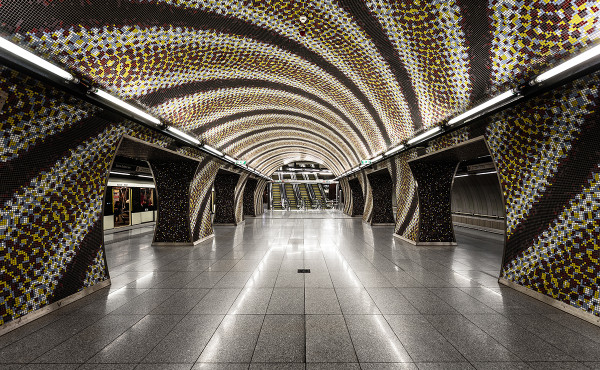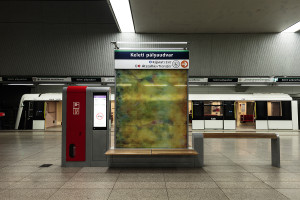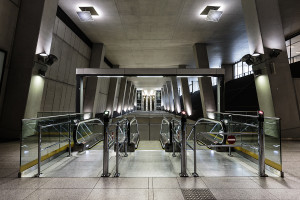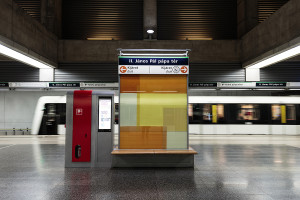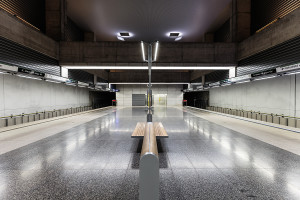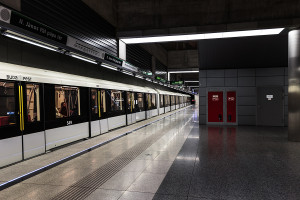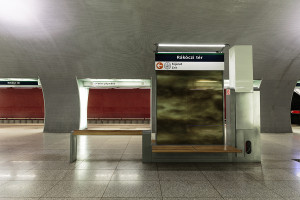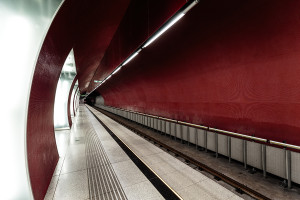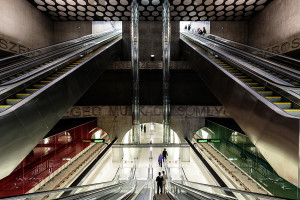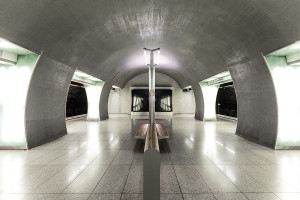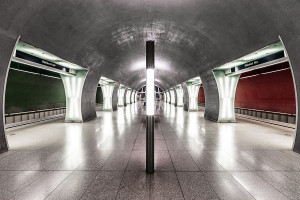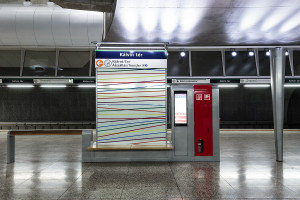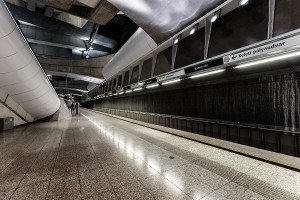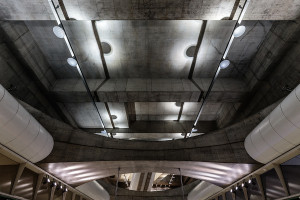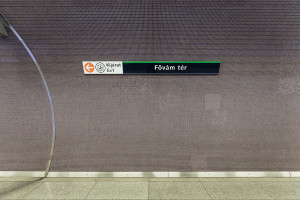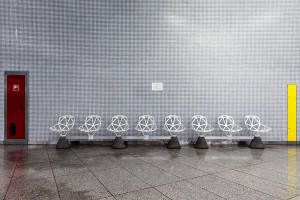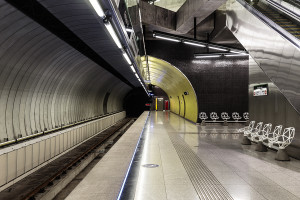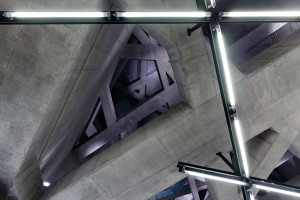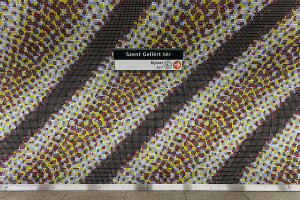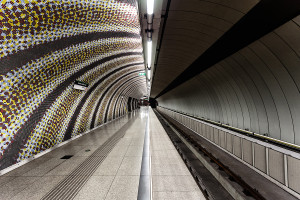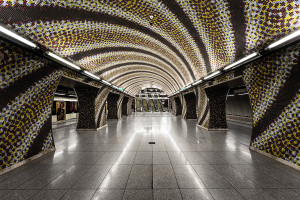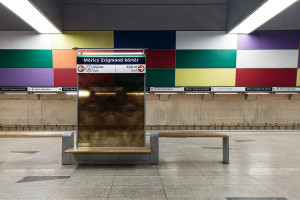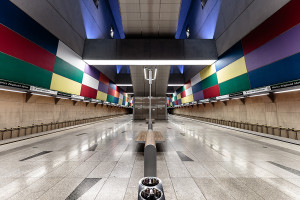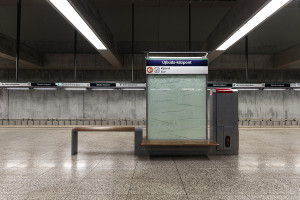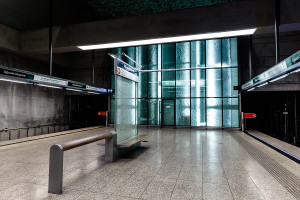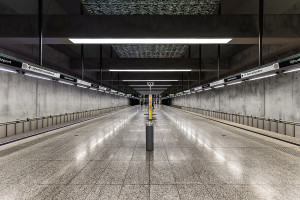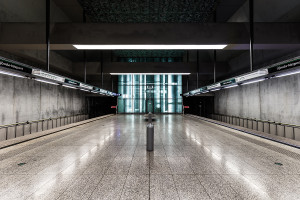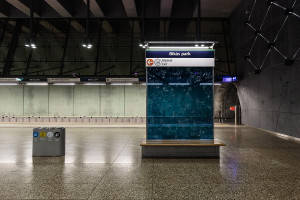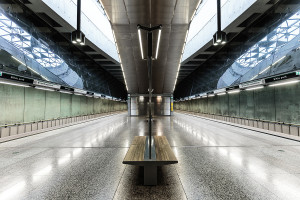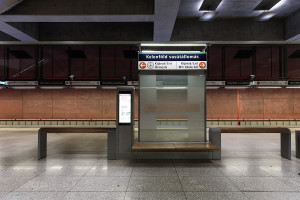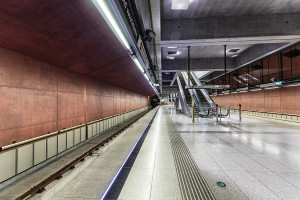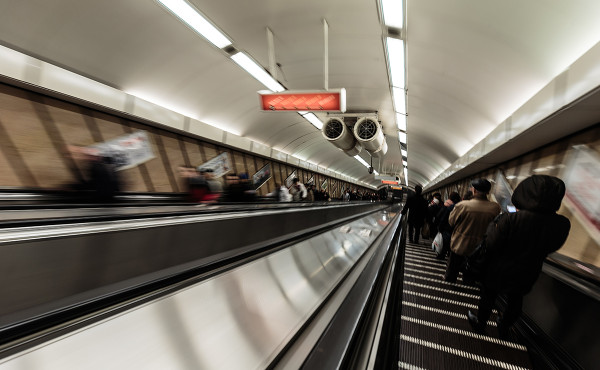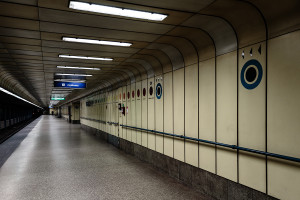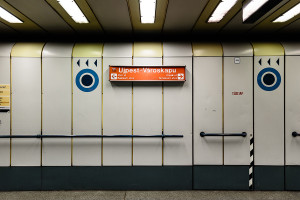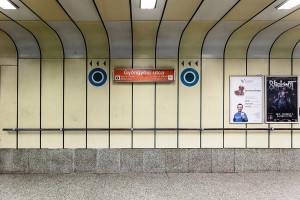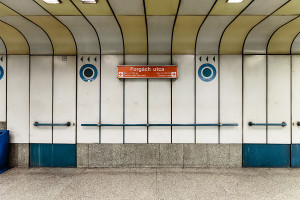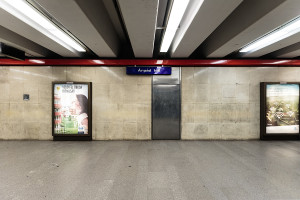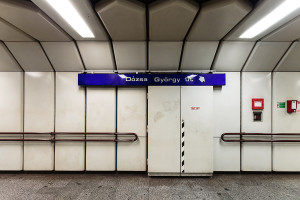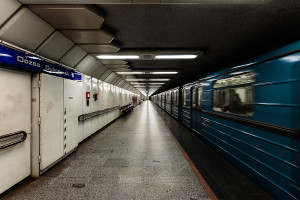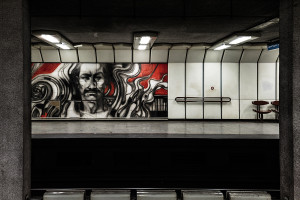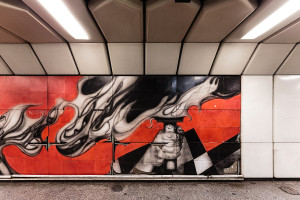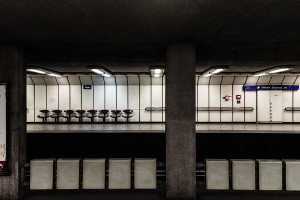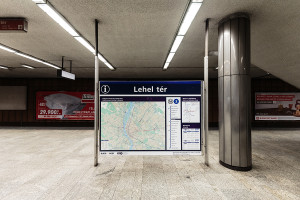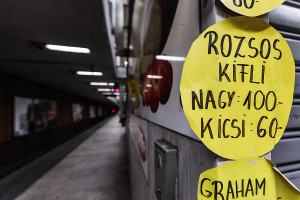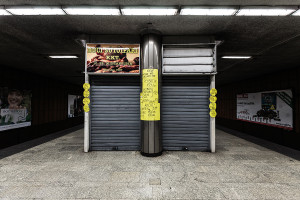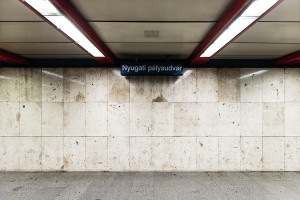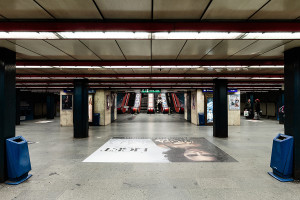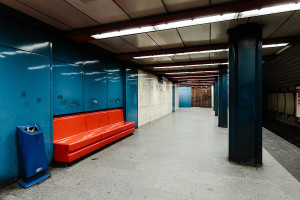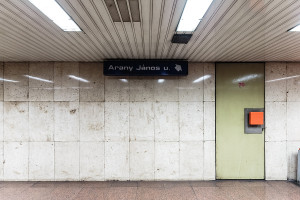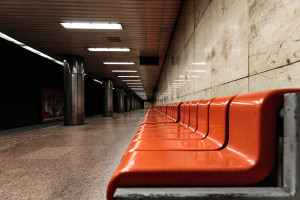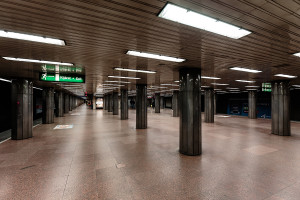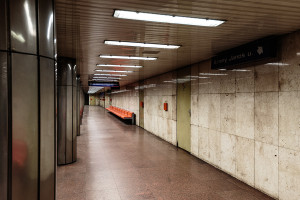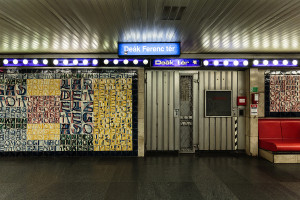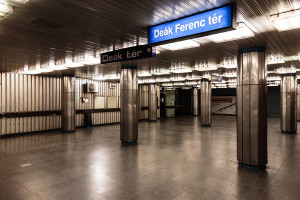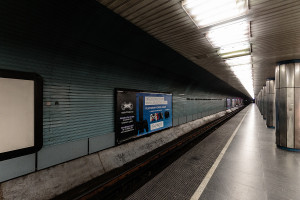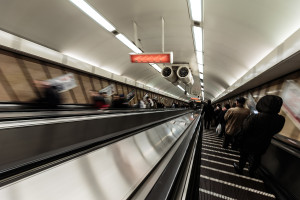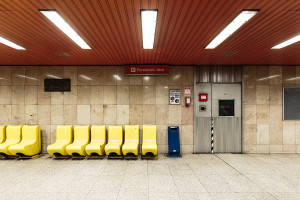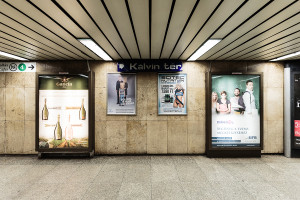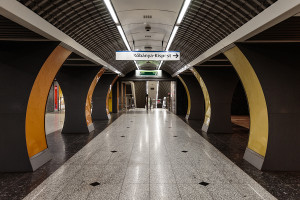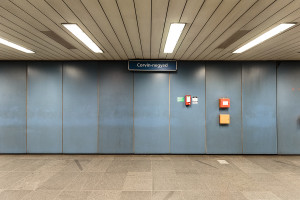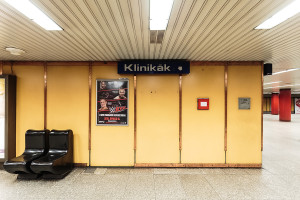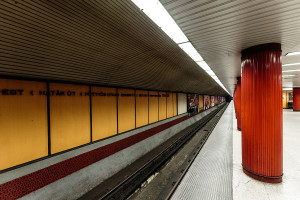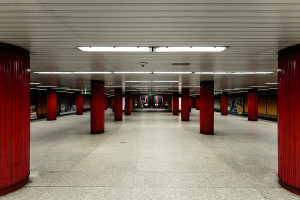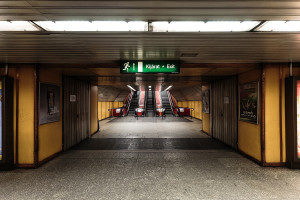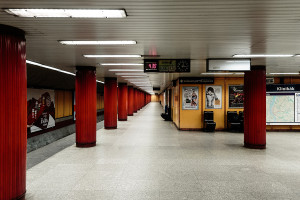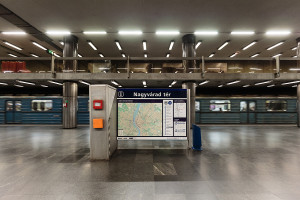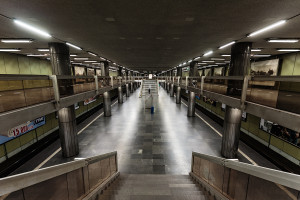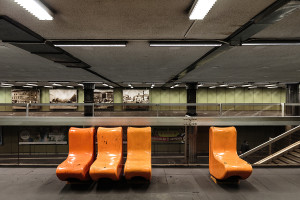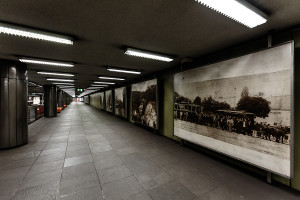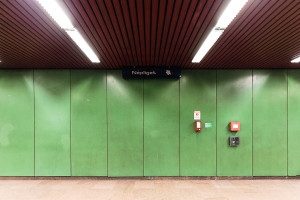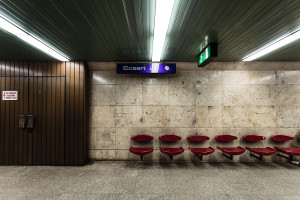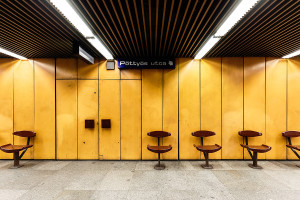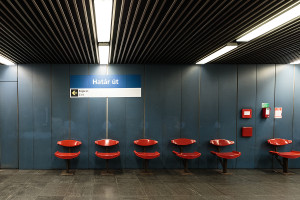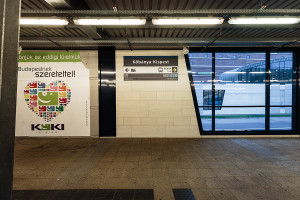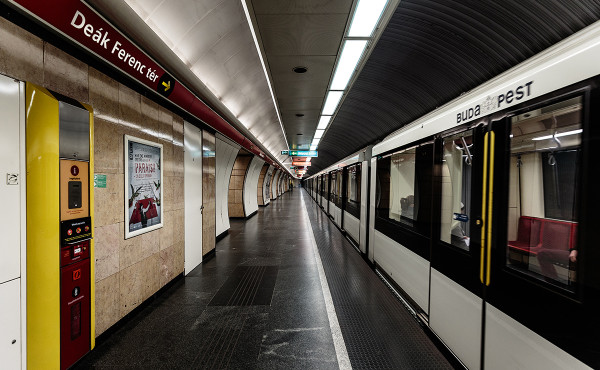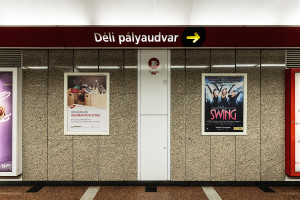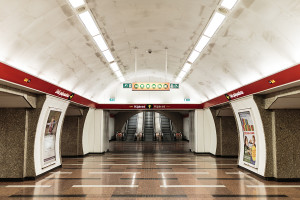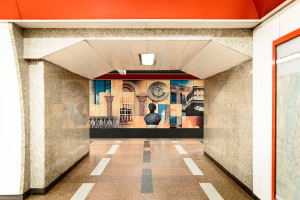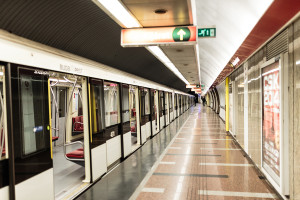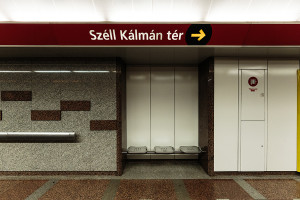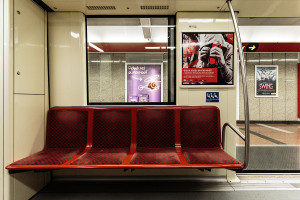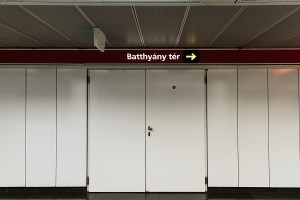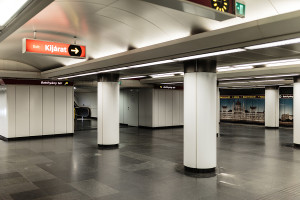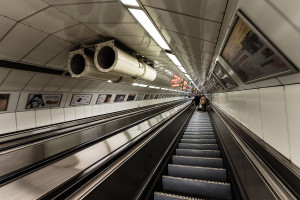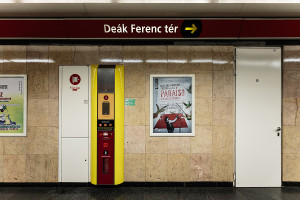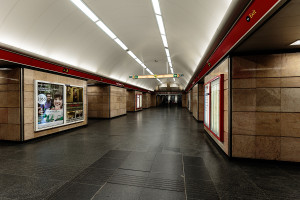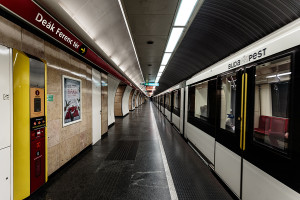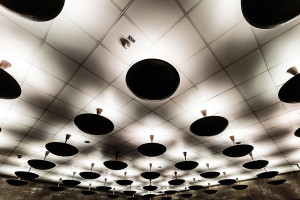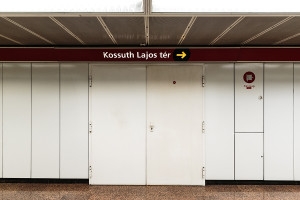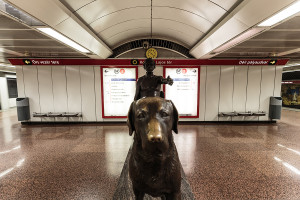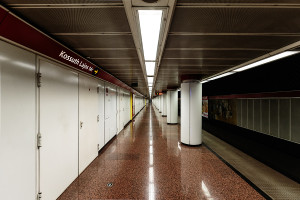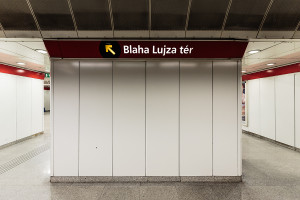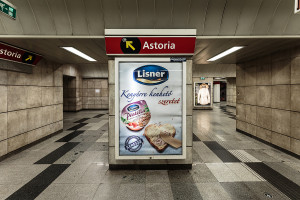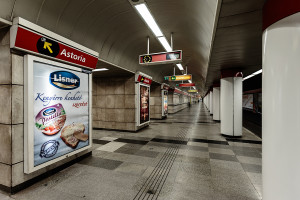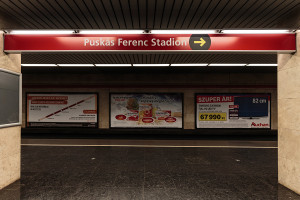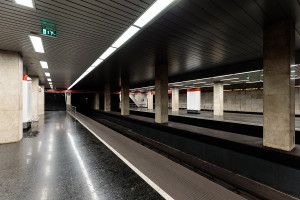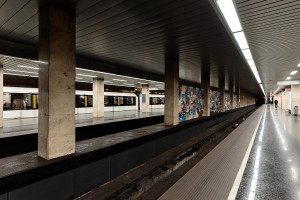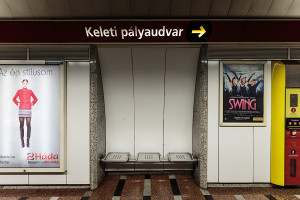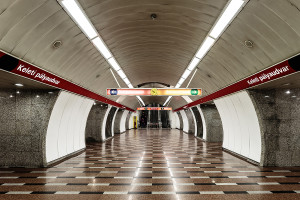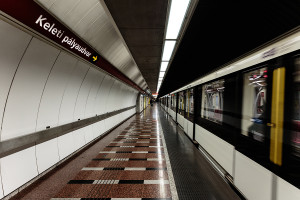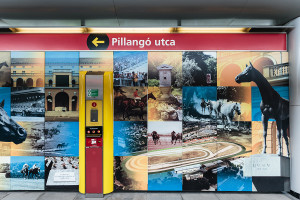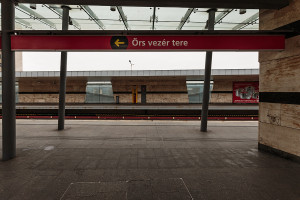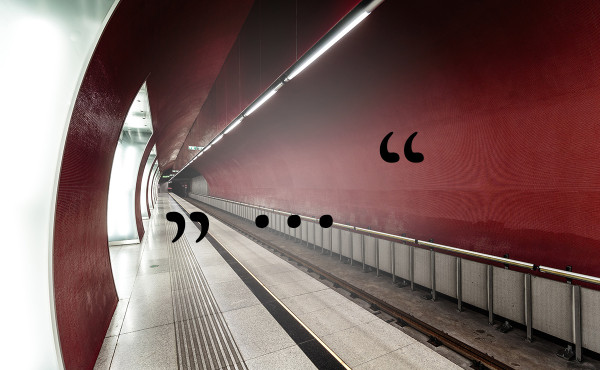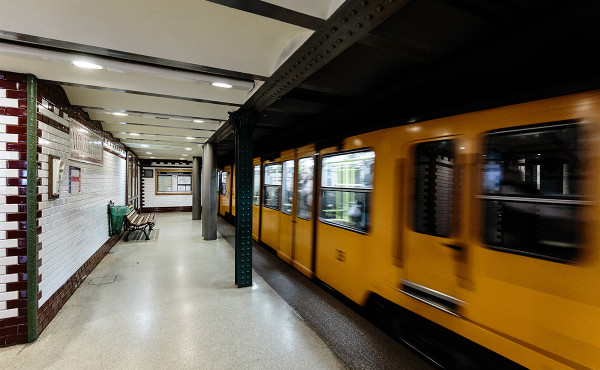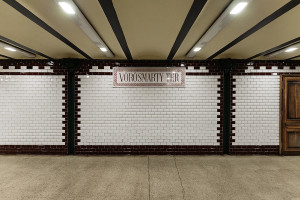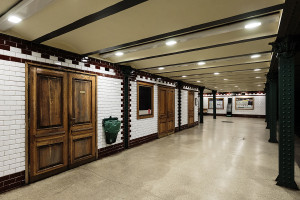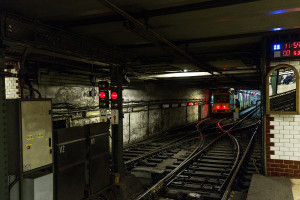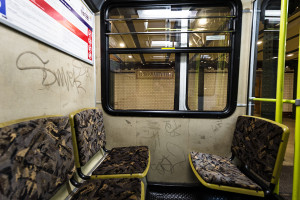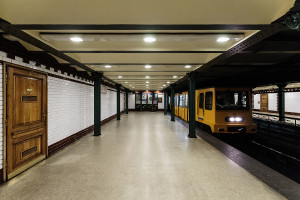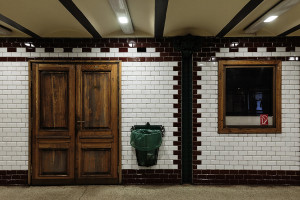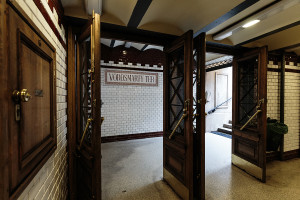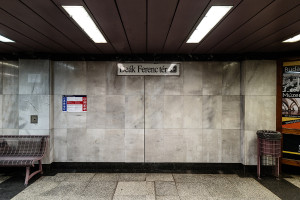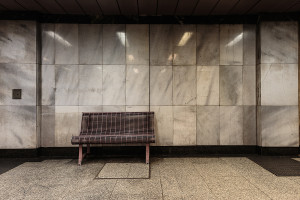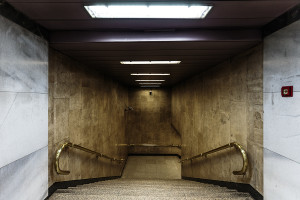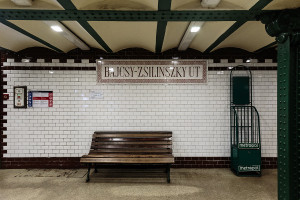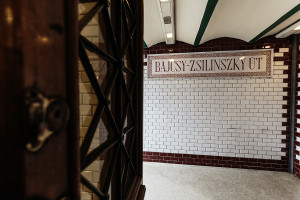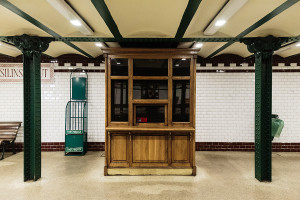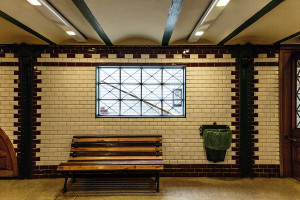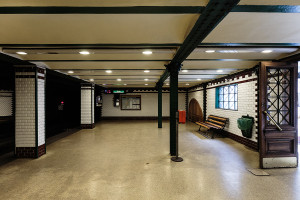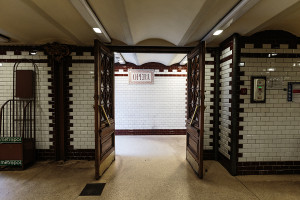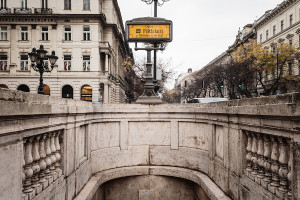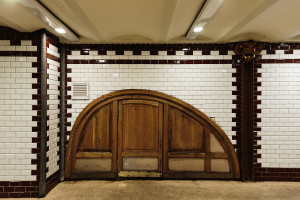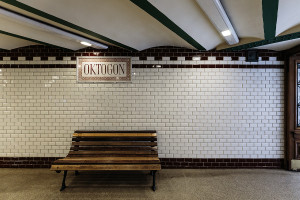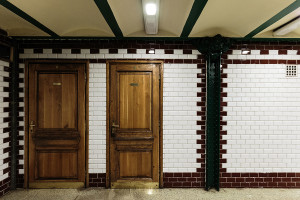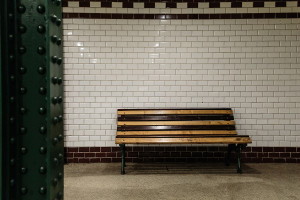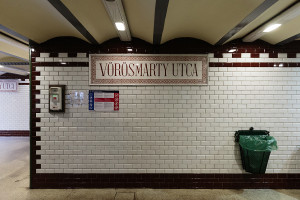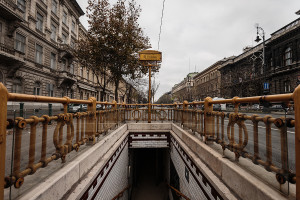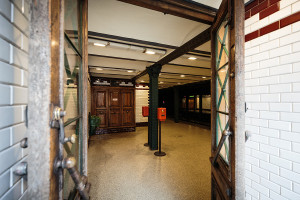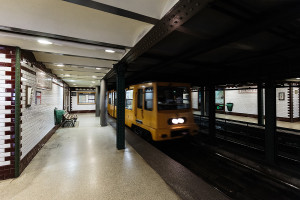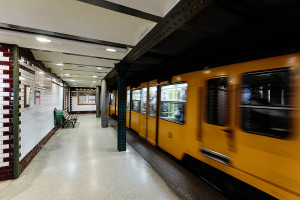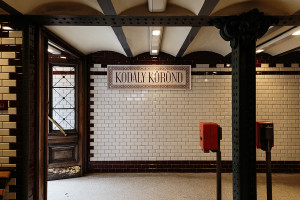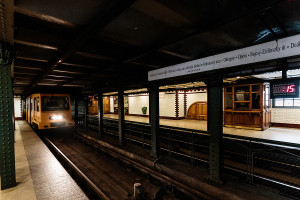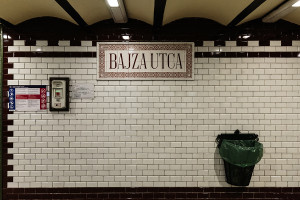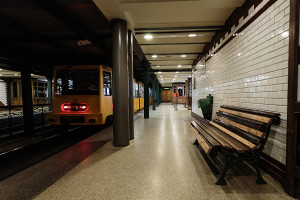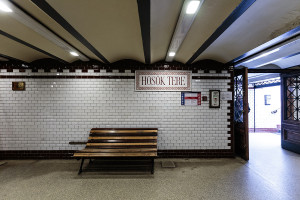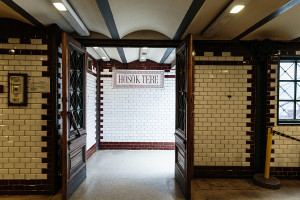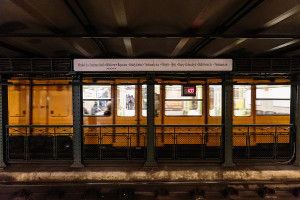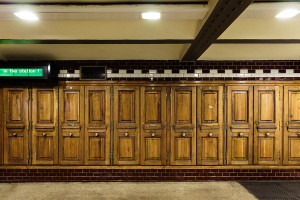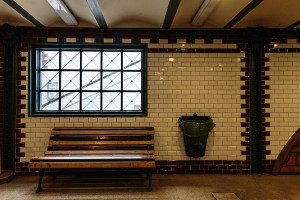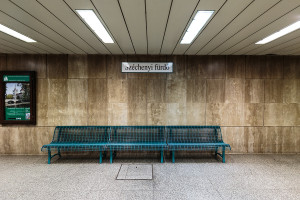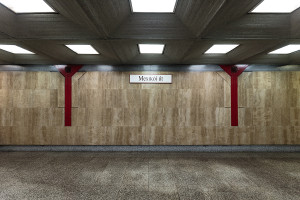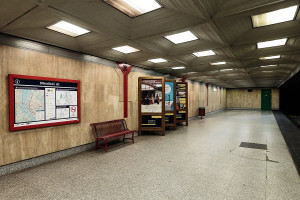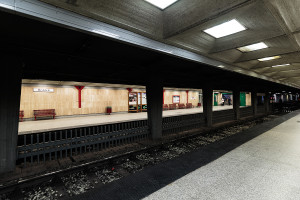25
2014- Keleti pályaudvar
- Entrance to eastern M4 terminus Keleti pályaudvar
- II. János Pál pápa tér
- Symmetry of II. János Pál pápa tér station
- M4 train ready to depart from II. János Pál pápa tér station
- Rákóczi tér
- Tunneltube and platform of Rákóczi tér station
- Escalators to the platforms of Rákóczi tér station
- Symmetry of Rákóczi tér’s platform end
- Symmetry of the Rákóczi tér station’s middle aisle
- Kálvin tér
- Inside M4 station Kálvin tér
- Concrete ceiling structure inside Kálvin tér station
- Fovám tér
- Bench seats at Fovám tér station
- Tunnel tube and platform of Fovám tér station
- Concrete ceiling structure at Fovám tér station
- Szent Gellért tér
- Tunnel tube and platform of Szent Gellért tér station
- Middle aisle of Szent Gellért tér station
- Móricz Zsigmond körtér
- Symmetry of Móricz Zsigmond körtér station
- Újbuda-központ
- Water is the theme of Újbuda-központ station
- Symmetry of Újbuda-központ station
- Symmetry of Újbuda-központ station
- Bikás park
- Symmetry of Bikás park station
- Kelenföld vasútállomás
- Platform of western M4 terminus Kelenföld vasútállomás
25
2014- Újpest-Központ
- Platform of northern M3 terminus Újpest-Központ
- Újpest-Városkapu
- Gyöngyösi utca
- Forgách utca
- Árpád híd
- Dózsa György út
- Train of M3 line rushing through Dózsa György út station
- Mural gracing the wall of Dózsa György út station
- Damaged mural at Dózsa György út station
- Side platforms at Dózsa György út station
- Lehel tér
- Price labels of the snack stall inside Lehel tér station
- Snack stall inside Lehel tér station
- Nyugati pályaudvar
- Entrance area of Arany János utca station
- Platform end at Nyugati pályaudvar station
- Arany János utca
- Bench seat at Arany János utca station
- Colonnade inside Arany János utca station
- Rear area of platform at Arany János utca station
- Deák Ferenc tér
- Metal covered columns at Deák Ferenc tér station
- Tunnel tube and platform of Deák Ferenc tér station
- Escalator ride
- Ferenciek tere
- Kálvin tér
- Crossing from M3 to M4 line at Kálvin tér
- Corvin-negyed
- Klinikák
- Tunnel tube and platform of Klinikák station
- Central platform of Klinikák station
- Entrance and escalator area of Klinikák station
- Platform of Klinikák station
- Nagyvárad tér
- Wide angle shot of Nagyvárad tér station
- Interior at Nagyvárad tér station
- Historic photographs exhibited at Nagyvárad tér station
- Népliget
- Ecseri út
- Pöttyös utca
- Határ út
- Kobánya-Kispest
25
2014- Déli pályaudvar
- Train of M2 line at western terminus Déli pályaudvarMiddle aisle of terminus Train of M2 line at western Déli pályaudvar station
- Murals grace the walls of M2 terminus Déli pályaudvar
- Train of M2 line at western terminus Déli pályaudvar
- Széll Kálmán tér
- Seats inside a coach of M2 line
- Batthyány tér
- Central platform of Batthyány tér station
- Escalator ride
- Deák Ferenc tér
- Middle aisle of M2 line at Deák Ferenc tér
- Train of M2 line at Deák Ferenc tér station
- Illumination of metro hub Deák Ferenc tér
- Kossuth Lajos tér
- Statue at Kossuth Lajos tér station
- Low ceiling at Kossuth Lajos tér station
- Blaha Lujza tér
- Astoria
- Platform of Astoria station
- Puskás Ferenc Stadion
- Platforms of Puskás Ferenc Stadion station
- Platforms of Puskás Ferenc Stadion station
- Keleti pályaudvar
- Middle aisle of Keleti pályaudvar station
- M4 train departing from Keleti pályaudvar station
- Pillangó utca
- Örs vezér tere
24
2014Among the underground rails of Europe Budapest plays a special role as its origin is actually Germany. Berlin back then developed quickly and places like Potsdamer Platz square became the busiest spot in Europe. Logically infrastructure had to be brought into line with that high traffic density, hence quickly ideas to build a London-style underground arose. Actually Berlin should have got continental Europe’s first subway but design and constructional execution got blocked and thwarted by the same type of bourgeois and preservation of vested rights and property loving narrow-minded Berliners also bringing a gentrification disaster upon the city nowadays.
Visionary engineers Siemens & Halske looked for a wider field of putting their most important invention into operation, the electric motor as smoke involving coal-fired underground trains are no option. Siemens didn’t hesitate to think outside the box and got in touch with Austro-Hungary, a friend of Germany at that time, as they needed a transport solution for their world exhibition to open in 1896. Siemens built continental Europe’s first underground as well as first electric underground worldwide to start operations on time.
That very first electric underground in the world is yellow colour coded M1, the Földalatti line. Passengers can access it from side platforms whose entrances frame Budapest’s magnificent Andrássy út avenue. The subway is small as it got addressed to a passenger volume of the 19th century. Communist Hungary fortunately paid highest attention to preserving the original character of the Földalatti line when it got modernised in the 1970s. At that time the route got also extended northwards.
Photographing the Budapest Metro was difficult as due to local narrowness I couldn’t work with my usual prime lenses. All photos got shot with an ultra wide angle, what also means an aperture of f/4 and not usual f/1.4 what means a break to the way of what my subway images look like. All images got taken using a Canon EF 16-35mm f/4L IS USM. In case of Budapest’s M4 line I could use my beloved Sigma 35mm f/1.4 DG HSM Art again.
27
2014- Station sign of Vörösmarty tér station
- Vörösmarty tér – Terminus of Földalatti (M1)
- Reverse rail of Budapest Földalatti at Vörösmarty tér
- Coach of Budapest Földalatti (M1) at terminus Vörösmarty tér
- Földalatti train starting its journey at Vörösmarty tér
- Service room at Földalatti terminus Vörösmarty tér
- Entrance of Földalatti start and terminus Vörösmarty térStation sign of Entrance of Földalatti start and terminus Vörösmarty tér station
- Station sign of Deák Ferenc tér station
- Bench at Földalatti station Deák Ferenc tér
- Crossing to Metro lines 2 and 3 at Deák Ferenc tér
- Station sign of Bajcsy-Zsilinszky út station
- Station sign of Bajcsy-Zsilinszky út station
- Ticket office inside Bajcsy-Zsilinszky út station
- Detail of Bajcsy-Zsilinszky út station (Földalatti)
- Bajcsy-Zsilinszky út station of Földalatti line
- Station sign of Opera station
- Entrance to Földalatti at Opera
- Wooden wainscoting inside Földalatti station Opera
- Station sign of Oktogon station
- Wooden service room doors at Oktogon station
- Detail of Oktogon station
- Station sign of Vörösmarty utca station
- Entrance to Földalatti station Vörösmarty utca
- Entrance to Földalatti station Vörösmarty utca
- Földalatti train arriving Vörösmarty utca station
- Földalatti train passing Vörösmarty utca
- Station sign of Kodály körönd station
- Train arriving Földalatti station Kodály körönd
- Station sign of Bajza utca station
- Földalatti train ready to depart from Bajza utca station
- Station sign of Hosök tere station
- Station sign of Hosök tere station
- Földalatti train riding through (Heros’ Square) Hosök tere station
- Electric cabinet hidden behind wooden doors
- Detail of Földalatti station Hosök tere
- Station sign of Széchenyi fürdo station
- Station sign of Mexikói út station
- Platform of northern Földalatti terminus Mexikói út
- Platform of northern Földalatti terminus Mexikói út

 Deutsch
Deutsch